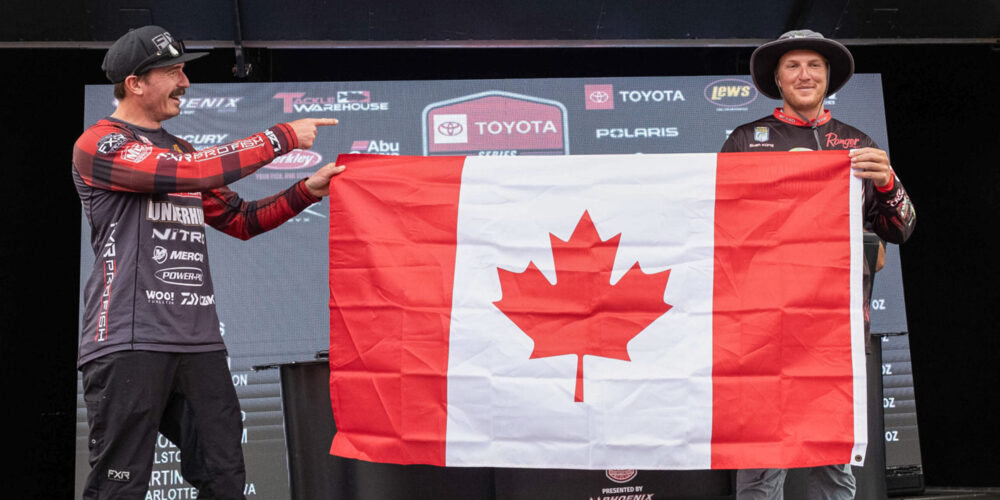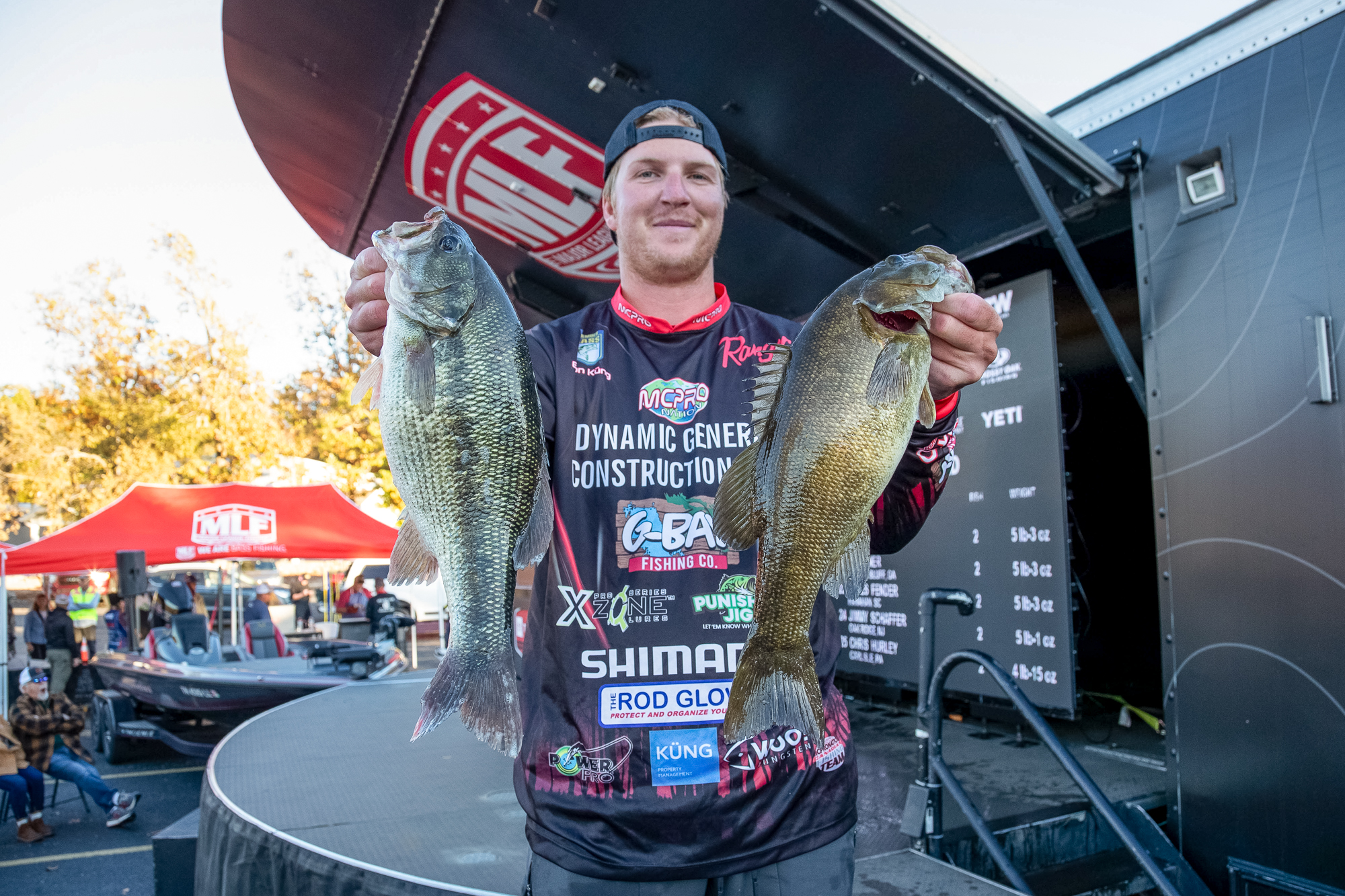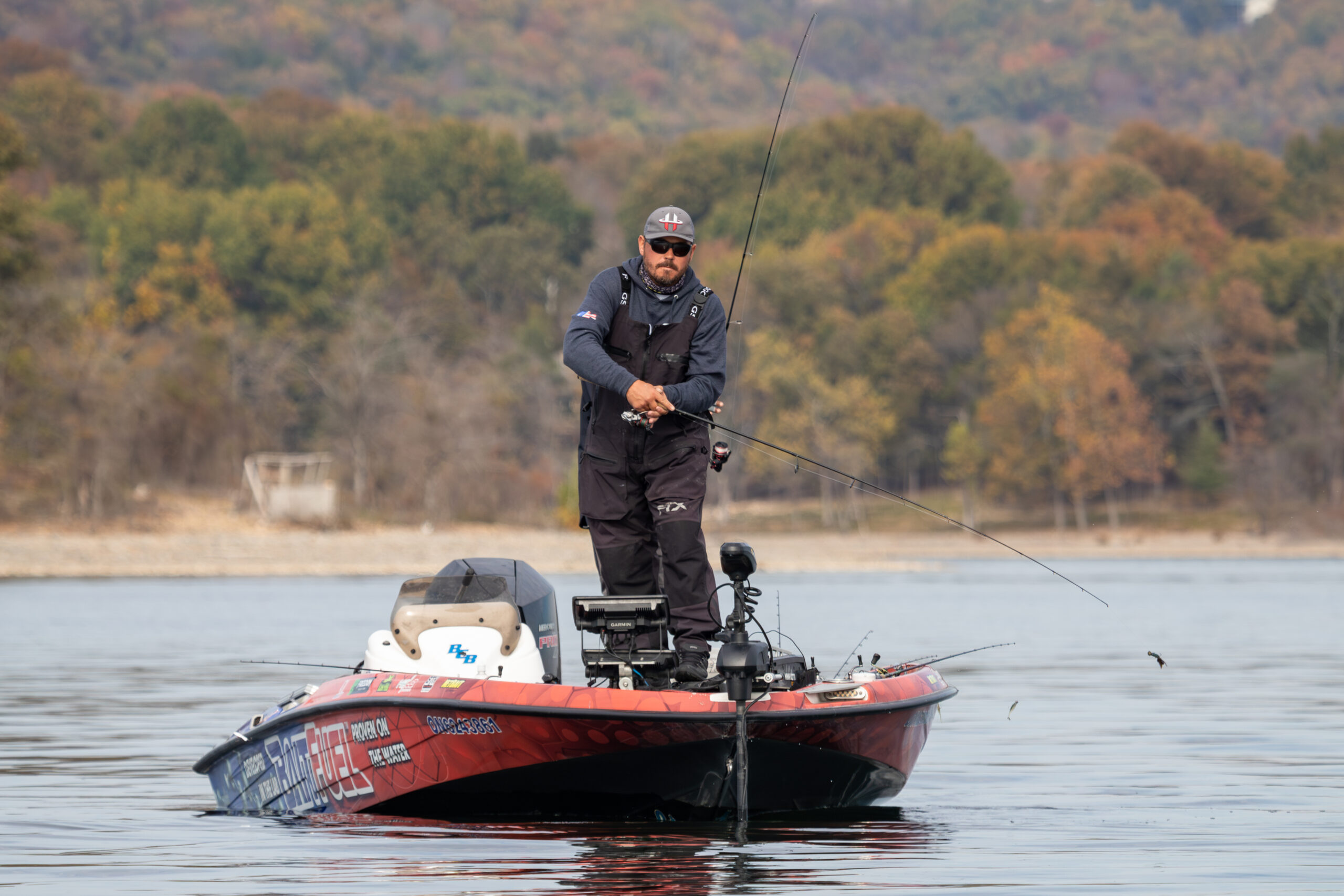Inside Canada’s strong showing at the Toyota Series Championship

In one rental house near Table Rock Lake, the evening prior to the final day of the Toyota Series Championship Presented by Simms had the potential to get tense.
Evan Kung and Erik Luzak were the only two anglers from the International Division to make the Top 25 and earn a third day on the water. Whoever finished higher in the overall standings would earn an extra $10,000 as the top angler from the division. And the two Canadians happened to be rooming together for the event.
With Kung leading Luzak by 1 pound, 2 ounces, Luzak teased him about sabotaging his gear overnight. Instead, the opposite occurred. The two anglers who have become friends while competing against one another in Ontario found themselves comparing strategies and sharing tackle tips as they rigged up for Championship Day.
“We were joking around a lot about cutting each other’s lines at night, but before the final day, we were actually both helping each other rig,” Luzak said. “I was rigging up his Damiki rigs, and he was lending me hooks to use, and we were sharing a lot of stuff.”
Both Kung and Luzak put together strong final days. Luzak sacked up 15-7 to climb to 12th place overall, but it wasn’t quite enough to catch Kung, whose 14-12 limit moved him to 10th and earned him the International Division bonus. For Luzak, pride in his country and friend won out over any bitterness he felt about falling 4 ounces short of an extra $10,000.
“Obviously I wanted it, but I wanted it for him pretty bad, too,” Luzak said of Kung. “He works hard, he really does, and is just a really good overall person. … I’m pretty pumped for him.”
“We fish against each other a lot back home,” Kung said. “He’s beat me probably more than I’ve beat him, so it felt good in that tournament.”

Kung and Luzak weren’t the only pros flying the Canadian flag on the final day. Jason Gramada finished 16th, while Brian Green came in 18th, making four Canada natives in the top 20 of the 210-boat field. The only other Canadian pro in the tournament, Christian Clancy, had a solid showing as well, finishing 41st. No other international angler finished in the top 90. To top it off, Ashley Rae topped all other co-anglers from the International Division with her 33rd-place finish.
The collective success of the Canadians, especially on a lake none had fished prior to this fall, showcased the depth of talent located above the northern border. As more Canadian anglers venture to the U.S. in search of professional fishing careers, it could also be a sign of things to come.
Unlocking Table Rock
Kung launched his boat onto Table Rock for the first time in late September, about five weeks prior to the Toyota Series Championship. Having just competed in a Bassmaster Open on nearby Lake of the Ozarks, he spent a couple days doing reconnaissance at the championship venue before driving home. He then returned shortly before the lake went off limits, even competing in a local derby to get a taste for what the weights might look like. He finished second.
While his week or so of experience might not seem like a ton of time on the fishery, to Luzak and his fellow countrymen, he might as well have been a local old-timer.
“He’s telling me all this, and I’m like, ‘Oh my gosh, Evan, you’ve got it dialed,’” Luzak said. “Like, if you get second in a local derby right before it goes off limits, you’ve got it figured out.”
Luzak, Gramada and Green had never been to Table Rock prior to the start of official practice. So, how did they manage to break down the 43,000-acre reservoir so successfully?
First off, in Luzak’s words, “a bass is a bass.” Second, whether or not they were largemouth, smallmouth or spotted bass, Table Rock’s largely pelagic, bait-chasing fish behaved similarly to the smallmouth in many of the lakes in southeast Canada, especially the “back lakes” (smaller, non-Great Lake fisheries).
“We have a lot of alewives in our back lakes,” Green said. “And (the smallmouth) just end up going offshore, chasing bait, pretty much the same way they did on Table Rock.”
While they plied different areas of the lake, that’s how Kung and Luzak caught all their keepers — using soft plastic minnows on jigheads to catch suspended fish that were chasing balls of bait. Kung’s bass were suspended anywhere from 5 to 40 feet deep over 150-200 feet of water.
Green took a slightly different approach. He tried to chase nomadic bait-eaters on the first morning of the event, but when he hadn’t put a keeper in the livewell by 11 a.m., he switched gears. He caught a 12-4 limit of spotted bass on a point using a jig, then targeted smallmouth by dragging a tube on the second and third days. Gramada — who, like Green, didn’t stay with or talk to the other Canadian anglers during the event — split the difference. In practice, he found schools of spotted bass on the bottom in 45 to 65 feet of water, where main-lake points dropped into the river channel. During competition, however, the bass suspended and became a bit more challenging to catch on his wobble head and creature bait combo, so he mixed in a Turn Back Shad from Freedom Tackle, which produced one key largemouth and a few smallmouth.
All four approaches had something in common: They relied on electronics prowess to find fish. Gramada and Green both believe that’s one reason Canadian anglers have experienced success in the U.S., and particularly on highland reservoirs like Table Rock. On the smallmouth-dominant tournament fisheries in Canada, using forward-facing sonar and other modern technology to find and catch suspended bass has become a must.
“We’re very comfortable with those clearer, rockier lakes,” Gramada said. “The spotted bass, in my opinion, set up very much like smallmouth on Lake Ontario do. The way I look for smallmouth deep on the St. Lawrence (River) and Lake Ontario and on those big Ontario back lakes, I looked for them basically the same way on Table Rock. And then add in the fact that there’s also suspended fish. … Go into any of the Canadian back lakes, that’s how you win.”
A sign of success to come?

Canadian success in American tournaments isn’t a new phenomenon. But between Jeff Gustafson’s Bassmaster Classic victory and the strong showing from the Canadian contingent at the Toyota Series Championship, it felt more pronounced in 2023.
Luzak, a longtime tournament veteran in Canada who also competed on the Tackle Warehouse Pro Circuit in 2020 and 2021, doesn’t feel bass fishing is significantly more popular in his homeland now than when he started fishing derbies 24 years ago. Instead, the example of anglers like Gustafson and brothers Chris and Cory Johnston have inspired more young Canadians to venture south of the border in search of a full-time fishing career.
“I always felt like, when I was growing up, a kid in Canada fishing local lakes, local tournaments, I didn’t have a chance to go down and fish a tournament against Kevin VanDam,” Luzak said. “That wasn’t really an option. But you kind of realize now that it is an option if you just throw yourself down there and go for it.”
Gramada, Green and Kung all embody that phenomenon. Gramada and Green both said they’re hoping to compete on a national tour like the Tackle Warehouse Invitationals within the next few years, once they have the financial and sponsorship resources to do so. The 24-year-old Kung fished all nine Bassmaster Open tournaments in 2023 and plans to do so again next year.
“I think once people like Gussy and the Johnstons and Cooper (Gallant) and Luzak, all those guys, have been successful in the states, that’s why more people are trying it now, because they realize it’s actually a possibility that someone from Canada can go and do it,” Kung said.
With its Northern Division — which features annual events on two border fisheries, the St. Lawrence River and Lake Champlain — and lucrative championship, the Toyota Series provides the ideal gateway for Canadian anglers looking to dip their toes into the U.S. tournament waters. Gramada and Green (both of whom live near the St. Lawrence, albeit several hours apart) qualified for the championship via the Northern Division, and Luzak fished two of the three events.
Gramada estimated there’s about 20 to 25 Canadian anglers who are good enough to compete at the top level in the U.S., but many have ventured south of the border sparingly or not at all. The results from Table Rock sure seem to back that up.
Don’t be surprised if, in the coming years, the Canadian contingent continues to make its presence felt in the Northern Division and the Toyota Series Championship, and the names who showed out for Team Canada at Table Rock become consistent contenders on the national tournament scene.
“I think, 100%, a whole bunch are going to start doing it more,” Luzak said. “That’s why I’m a huge fan of the (Northern Division). A lot of people have asked me when I chose to stop doing the full Pro Circuit, now the Invitationals. It was a lot easier to do the Toyota Series Northerns. It’s closer to home, but it’s still super competitive. Keeps you on your toes. And it has this chance at this $200,000 Championship.”